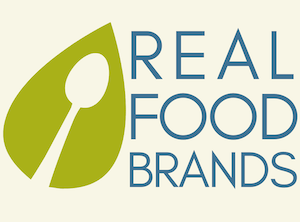While your marketing and sales plans are important steps to building your brand, you need to back them up with solid forecasting and demand planning if you want to grow your food business in a profitable way. Everything from efficient ordering and production planning to making sure you can properly serve your customers hinges on the work you do in this area.
Today on the Real Food Brands Podcast, host and Brand Strategist Katie Mleziva talks with Alex Duong, Founder – Ancient Provisions. In this episode, we talk about how to balance your sales projections with the lead time you need to hit those goals, and how to plan for growth.
The Difference Between Forecasting and Demand Planning
“Demand planning and forecasting are really focused on getting the right product to the right place at the right time at the right cost to you,” Alex says, “and the right cost to the customer to drive profitability on your side but sell-through on their side.” The keys to success are finding ways to minimize your inventory, maximize your efficiency, streamline your procurement, and optimize distribution and service level to your accounts.
Alex compares the difference between forecasting and demand planning to the difference between knowing it’s healthy to ten thousand steps a day and actually finding the time to do it without disrupting your daily routine. To succeed, you need to work with your manufacturer to successfully balance production capability, shelf life, and any lead time they need to get customers your product when they want it. That also means taking the time each week to see how your sales are doing and figure out whether or not you’ll need to reorder with enough lead time to deliver on future customer orders.
Tips for Doing Demand Planning Right
“There’s a good medium between doing the appropriate amount of what-if while not getting analysis paralysis,” Alex says. Almost every brand has made the mistake of ordering a huge run in anticipation of a deal that never materialized. You end up desperately calling around to see who can take the extra product off your hands, which is not the best situation to be in. “You have to assess, internally, what is the appropriate appetite for risk,” Alex says, where you have to balance the chance for something big to potentially happen for your brand with the possibility you’ll need to dump your extra stock.
As far as what you can do to improve your chances of playing things the right way, Alex recommends reducing the variance on what lead time actually means for your co-packer. “If you can’t trust your partners internally and control those factors, there’s no way you’re going to be able to deliver a consistent experience to people who are outside of your control like your retailers,” he says. That also means having a good handle on how growth in your business affects your vendors. If you grow from 5% of their business to 10%, that may impact their lead time going forward and hamper your ability to scale. Alex has a lot more practical tips, so be sure to listen to the full episode.
To wrap up the show Katie shares that her 12-week RFB Round Table Mastermind group for Food & Bev company founders will be starting again in late Q1. Check out details here or sign up for her email list so you don’t miss out on the details.
Now, let’s go shake up shopping carts!
In This Episode:
- The difference between forecasting and demand planning, and the pillars of each.
- Why forecasting and demand planning are essential when you’re planning for growth in your food business.
- The different factors that come into play when you’re forecasting.
- How to avoid analysis paralysis.
- Striking the right balance between risk and potential for growth.
- Why communication with your co-packers about lead time is essential.
- How to identify what’s driving your lead times.
Quotes:
“Demand planning and forecasting are really focused on getting the right product to the right place at the right time at the right cost to you.” – Alex Duong
“We’re bullish about driving our product into retailers, but a really important consideration in conversations with retailers is when to launch.” – Alex Duong
“There’s a good medium between doing the appropriate amount of what-if while not getting analysis paralysis.” – Alex Duong
Resources:


